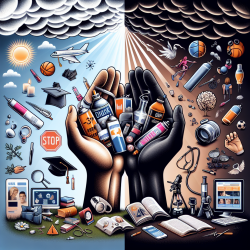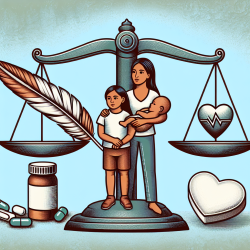As a practitioner working with adolescents, it's crucial to stay informed about emerging issues that impact their well-being. One such issue is the alarming rise in inhalant abuse and whitener addiction among teens. The recent research article, The Need for Action: Addressing Inhalant Abuse and Whitener Addiction Among Adolescents, sheds light on this pressing problem and offers actionable insights for practitioners like you.
Inhalant abuse refers to the intentional inhalation of volatile substances to achieve mind-altering effects. Whitener addiction, a specific form of inhalant abuse, involves substances like correction fluid and markers, which contain harmful solvents. These practices pose significant health risks, including cognitive impairments, organ damage, and even sudden death.
So, what can you do to combat this issue effectively? Here are some strategies based on the research findings:
1. Education and Awareness Campaigns
Implement school-based programs that educate students about the dangers of inhalant abuse and whitener addiction. Peer-led initiatives can be particularly effective. Don't forget to involve parents and caregivers in these campaigns to ensure they recognize the warning signs and know how to intervene.
2. Early Intervention and Treatment
Identify at-risk adolescents early and provide them with counseling and education on the dangers of inhalant abuse. For those already struggling with addiction, offer a comprehensive treatment plan that may include behavioral therapy and medications.
3. Collaboration is Key
Work closely with schools, healthcare providers, and community organizations to create a coordinated approach. This collaboration can help in early identification, intervention, and providing the necessary support to affected individuals and their families.
4. Support for Families
Families play a crucial role in an adolescent's recovery journey. Provide them with counseling and support groups to help them cope with the emotional and financial strain of dealing with a loved one's addiction.
Addressing inhalant abuse and whitener addiction among adolescents requires a comprehensive and coordinated approach. By implementing these strategies, you can make a significant impact on the lives of the teens you work with.
To read the original research paper, please follow this link: The Need for Action: Addressing Inhalant Abuse and Whitener Addiction Among Adolescents










